As the winter months set in, many of us retreat to the warmth and comfort of our homes, seeking refuge from the chilly weather. But it’s also a time when the natural world transforms into a breathtakingly beautiful wonderland.
While it may seem daunting to brave the cold and snow, winter camping can be an incredibly rewarding experience for those willing to try it. Winter camping offers a feast for the senses, from the crunch of snow underfoot to the stunning vistas of snow-capped mountains.
But let’s be honest: the idea of spending a night in a tent when it’s below freezing might seem intimidating.
Luckily, no camp in winter is impossible with the right gear, clothing, and preparation.
That’s why, in this article, we’ll cover everything – including top tips and strategies – you need to know to make the most of your winter camping experience.
So layer up, pack your bags, and prepare to brave the cold and discover the magic of cold weather camping.
Reasons to camp in winter
As you ponder the idea of setting up camp in the frosty outdoors, you might be asking yourself, “Why camp in winter?”
Although it’s not as conventional as summer camping, several enticing reasons exist to brave the cold and venture into the great white wilderness.
Experience the serene beauty of snow-covered landscapes
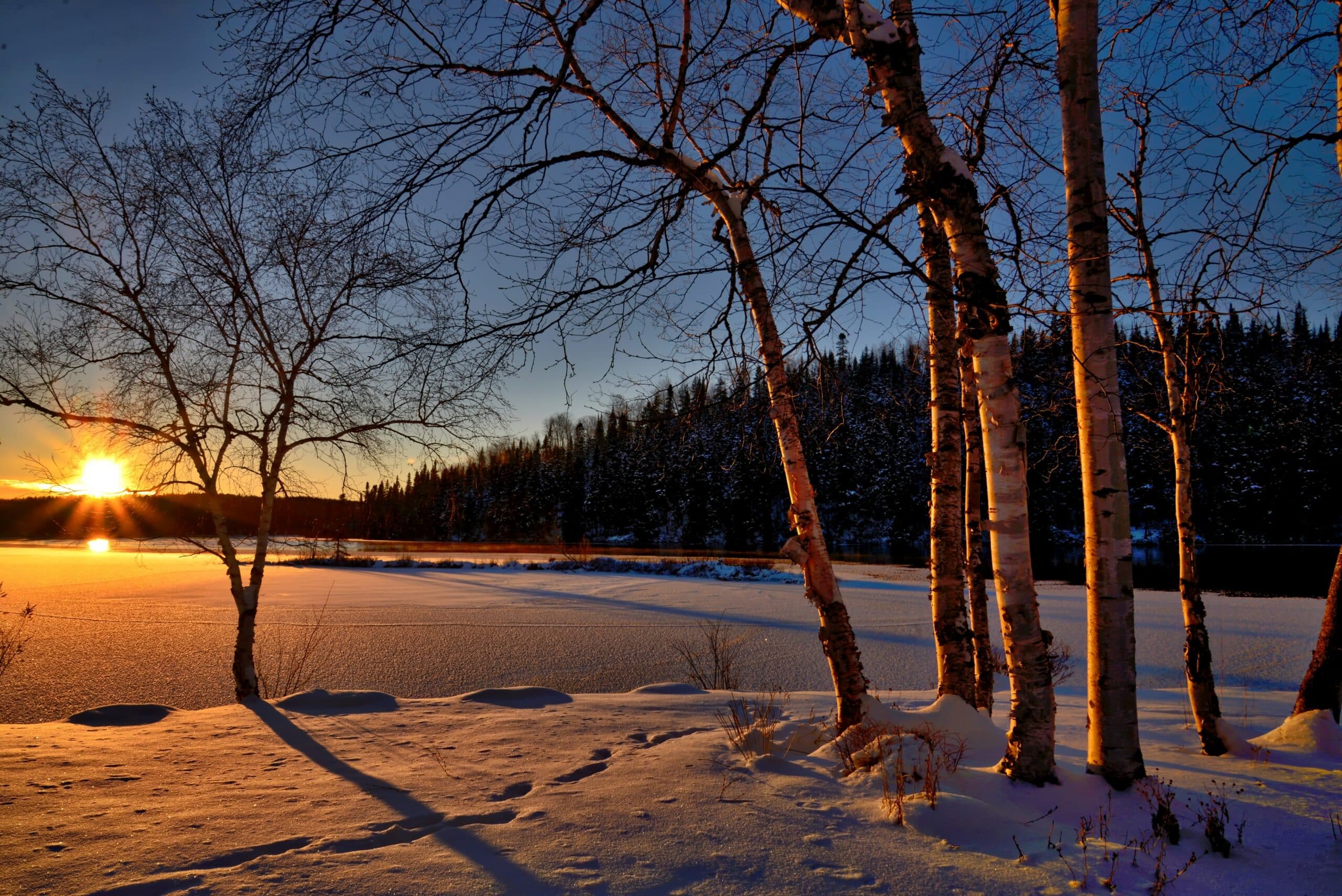
Winter transforms the world into a magical wonderland of snow and ice, offering a completely different experience from other seasons.
Pristine, snow-covered trees, and sparkling frozen lakes create a sense of peace and tranquility that’s hard to find elsewhere.
The stillness and quiet of a winter landscape can be genuinely rejuvenating for the soul.
Learn everything about why camping is good for you.
Enjoy uncrowded campsites and trails
One of the best things about winter camping is the lack of crowds. Most people prefer to stay indoors during the colder months, leaving campsites and trails relatively empty.
This means more space, privacy, and a greater connection to nature. Plus, finding and reserving campsites is easier, which can be a real bonus.
Embrace the challenge of camping in harsher conditions
If you’re an experienced camper looking for a new challenge, winter camping is an excellent way to test your skills and push your limits.
The cold weather, snow, and ice can make everyday tasks more difficult, but overcoming these obstacles will definitely provide a sense of accomplishment and boost your confidence as an adventurer.
Discover unique winter outdoor activities
Camping in winter also opens up a whole new world of camp activities. From snowshoeing and cross-country skiing to ice fishing and building snow forts, there are plenty of fun ways to embrace the season and make your camping trip even more memorable.
Witness spectacular winter wildlife
While some animals may hibernate during winter, many others remain active, providing unique wildlife-watching opportunities.
Snowy landscapes make it easier to spot and track animals, and you might even have the chance to see rare winter migrations or mating rituals.
Choosing the perfect winter campsite
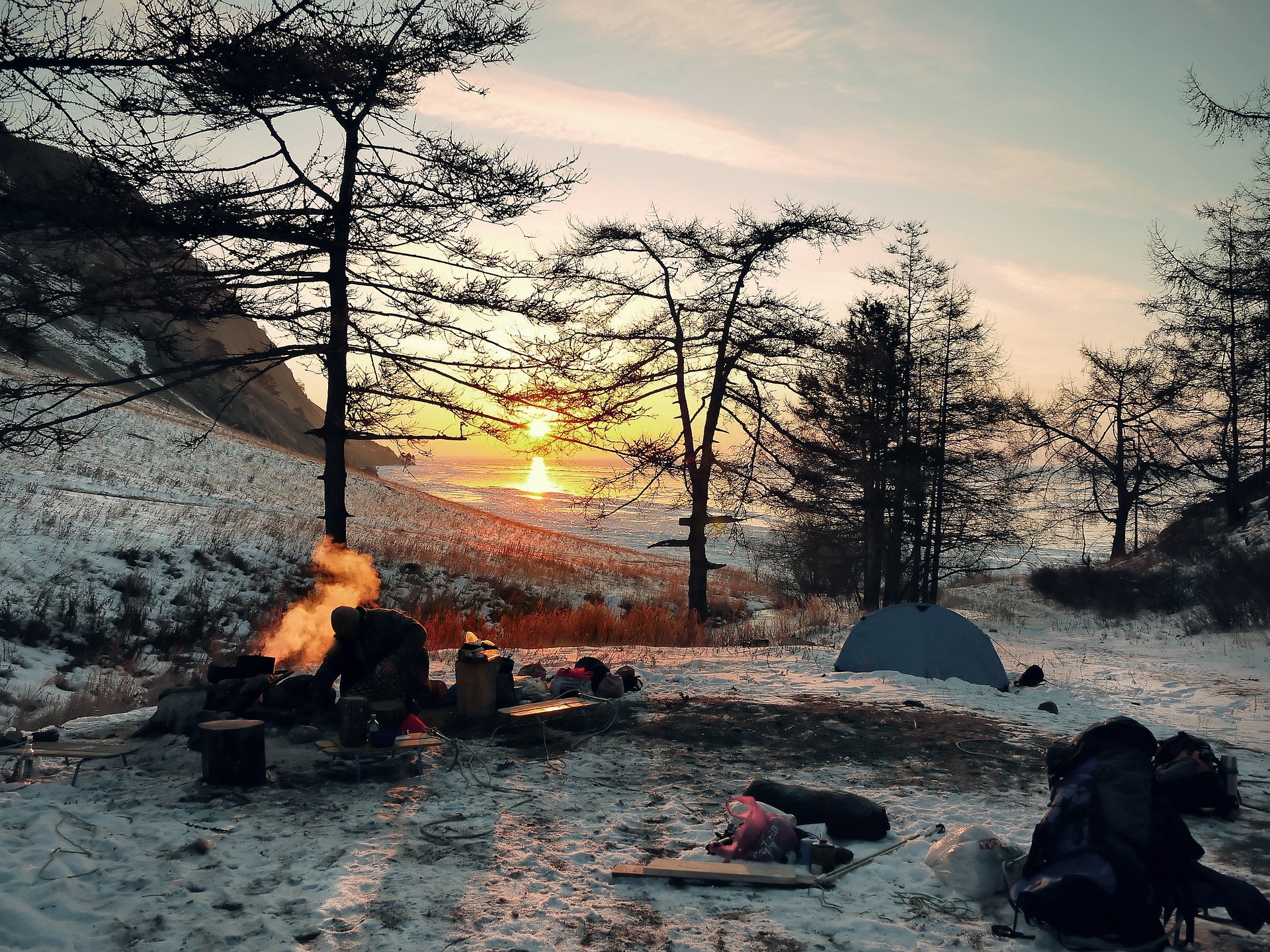
Picking the right campsite for your winter adventure is crucial for a safe and enjoyable experience.
There are several factors to consider when choosing a location to meet your needs and ensure you stay warm and comfortable throughout your trip.
Factors to consider when selecting a location
Accessibility: Ensure that your chosen campsite is easily accessible, taking into account road conditions and potential weather-related closures. Ensure you have up-to-date information on any trail or road conditions and a backup plan in case your original destination is not reachable.
Shelter from wind and snow: Select a site that offers natural protection from the elements, such as a location surrounded by trees or nestled against a hillside. This will help shield your tent from strong winds and heavy snowfall, making your camping experience more comfortable.
Find out the ins and outs of camping safety here.
Proximity to water sources: While camping in winter, access to water is still essential. Look for a campsite close to a river, lake, or stream, but make sure the water source isn’t frozen over.
If you can’t find a nearby water source, be prepared for melting snow as an alternative; just filter or purify the water before consuming it.
Availability of firewood and other resources: Having access to firewood and other natural resources can make your winter camping experience a different level of joy.
Choose a site with ample firewood to keep warm and cook campfire meals, as well as any other resources you may need, such as rocks for creating a fire pit.
Recommended winter camping destinations
To help you get started, here are a few popular winter camping destinations to consider:
- Yosemite National Park, California
- Rocky Mountain National Park, Colorado
- Mount Hood National Forest, Oregon
- Adirondack Park, New York
- Boundary Waters Canoe Area Wilderness, Minnesota
Remember to research each location’s specific rules and regulations regarding winter camping before setting out on your adventure.
Essential winter camping gear
Packing the right gear is crucial for a successful and enjoyable winter camping trip. Here’s a list of essential items you’ll need to stay warm, dry, and safe in the cold weather.
Shelter and insulation
Four-season tents: A four-season tent is designed to withstand harsh winter conditions, providing better insulation and protection from wind and snow. Look for a tent with a robust and sturdy frame and thick, durable fabric to ensure it can handle the weight of snow and resist tearing in high winds.
Experienced winter campers often recommend using a groundsheet or tent footprint beneath your tent to provide an additional barrier against cold and moisture.
Cold-weather sleeping bags: Invest in a high-quality sleeping bag rated for temperatures below the expected lows of your camping trip. A down or synthetic-filled sleeping bag with a temperature rating of at least 0°F (-18°C) is recommended for most winter camping situations.

For added warmth, consider using a sleeping bag liner, which can add extra insulation and increase the temperature rating of your cold-weather sleeping bag.
Insulated sleeping pads: An insulated sleeping pad is essential for keeping you warm by providing a barrier between you and the cold ground. Look for pads with a high R-value (a measure of insulation) to ensure maximum warmth and comfort.
Clothing and footwear
Layering system: Dressing in layers is key to staying warm during winter camping. Start with a moisture-wicking base layer to keep sweat away from your skin, add an insulating middle layer to trap heat, and finish with a waterproof and breathable outer layer to protect against wind, snow, and rain.
Waterproof and insulated boots: Choose waterproof, insulated boots with good traction for navigating snowy or icy terrain. Make sure they’re comfortable for long hikes and provide ample ankle support.
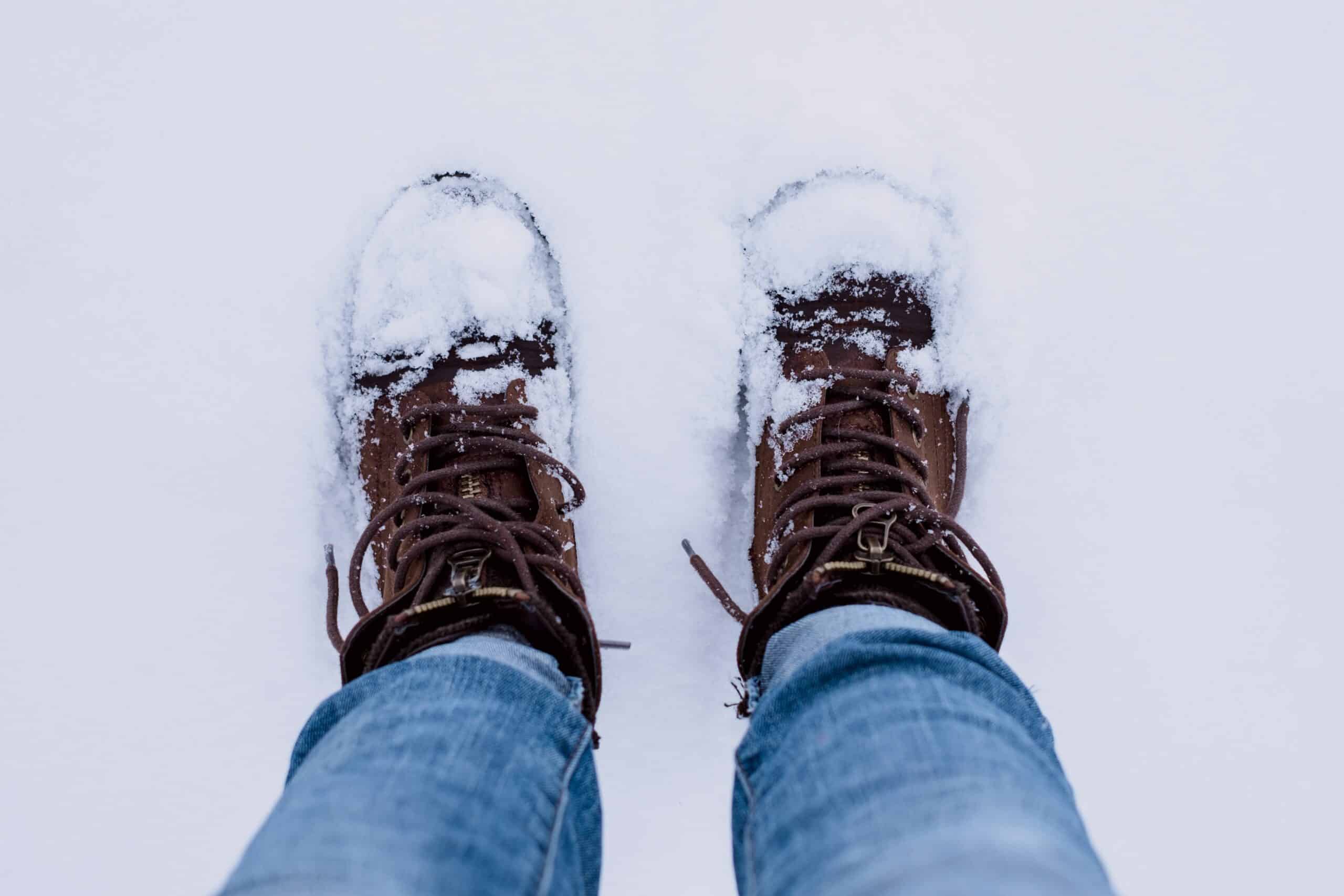
Gloves, hats, and other accessories: Protect your extremities by wearing warm gloves or mittens, a hat or balaclava, and thick, moisture-wicking socks. Bring extra pairs of warm socks to change into at night or if your feet get wet during the day.
Don’t forget a neck gaiter or scarf to shield your face from harsh winds and cold temperatures.
Cooking and food storage
Winter-friendly stoves: A reliable stove is essential for winter camping. Opt for a liquid fuel or canister stove that performs well in cold temperatures. Keep in mind that some stoves may require additional insulation or wind protection to function effectively in winter conditions.
Insulated containers: Insulated containers are ideal for storing hot food and beverages, helping to prevent them from freezing. Vacuum-insulated bottles and food jars will keep your drinks and meals warm for extended periods.
We’ve covered all the details about food storage for camping on our blog post.
Calorie-rich food options: Pack high-calorie, easy-to-prepare foods to maintain your energy levels and stay warm. Consider options like trail mix, energy bars, instant oatmeal, and dehydrated meals, which are lightweight and easy to cook.
Safety and navigation equipment
First aid kit: A well-stocked first aid kit is essential for any camping trip, but especially for winter camping. Make sure to include items specifically for cold-weather injuries, such as instant hot packs and a space blanket.
Headlamps or flashlights: Winter days are shorter, so having a reliable light source is crucial. Bring a camping lantern, headlamp, or flashlight with extra batteries, and consider a backup light source, just in case.
GPS and compass: Navigating in winter can be more challenging due to snow-covered trails and reduced visibility. Carry a GPS device, a map, and a compass to ensure you stay on track.
Camping heater: One tool that won’t let you down in terms of warmth is a camping heater. They come in all shapes and sizes for your needs. Portable gas camping heaters are famous for their convenience, while electric tent heaters are often the safest option.
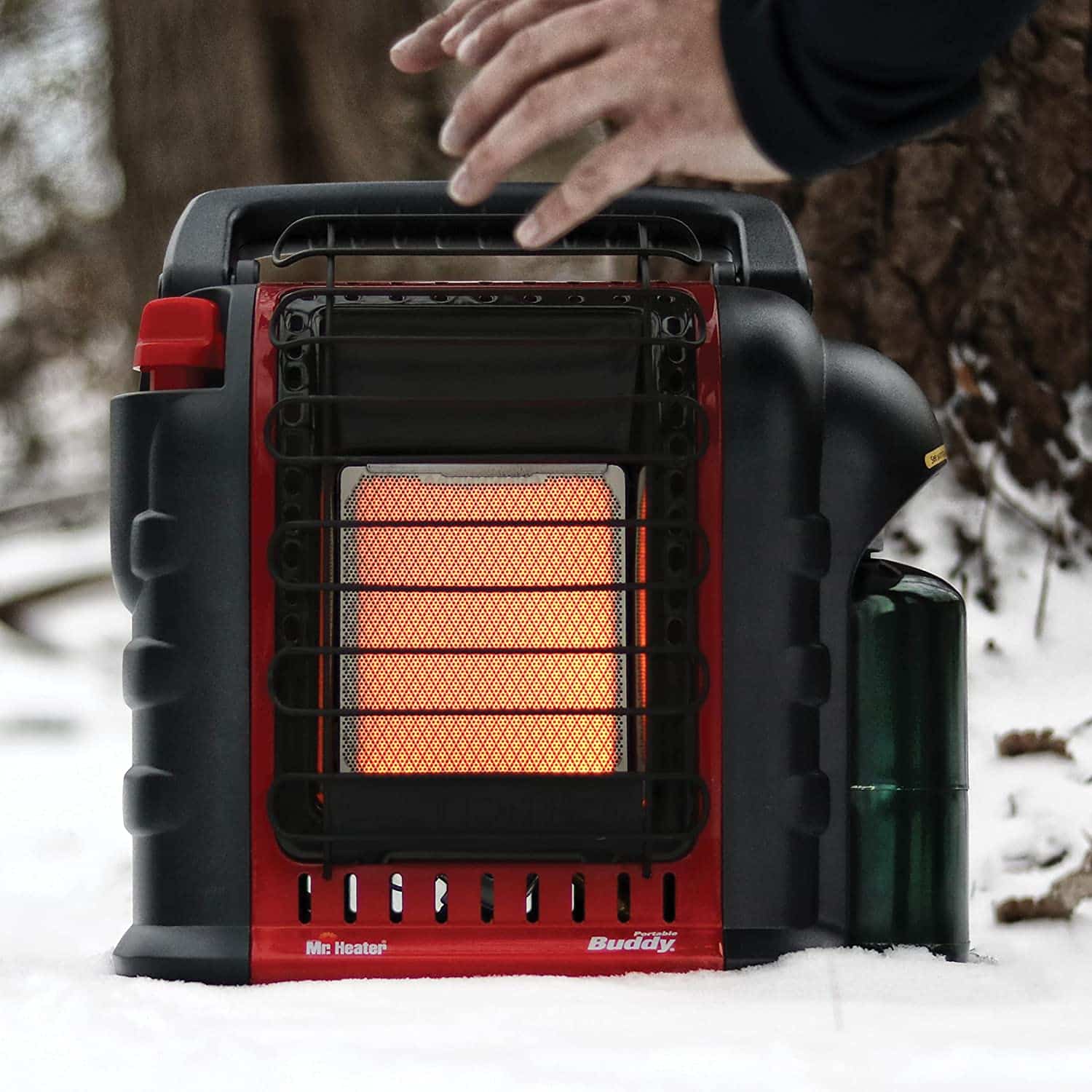
Avalanche safety gear (if applicable): If you’re camping in an area prone to avalanches, pack appropriate safety gear, such as an avalanche beacon, probe, and shovel. Familiarize yourself with avalanche safety principles and check local avalanche forecasts before setting out.
Winter camping tips and best practices
To make the most of your winter camping experience, follow these tips and best practices for staying warm, dry, and safe in cold weather.
Staying warm and dry
- Keep your clothing and gear dry by storing them in waterproof bags or containers.
- Change out of wet clothing as soon as possible to prevent heat loss.
- To retain body heat, wear a hat while sleeping and avoid tight clothing that could restrict circulation.
- Stay active during the day to maintain your body temperature and avoid staying idle for extended periods.
- Ventilate your tent to reduce condensation and moisture buildup.
Building and maintaining a fire
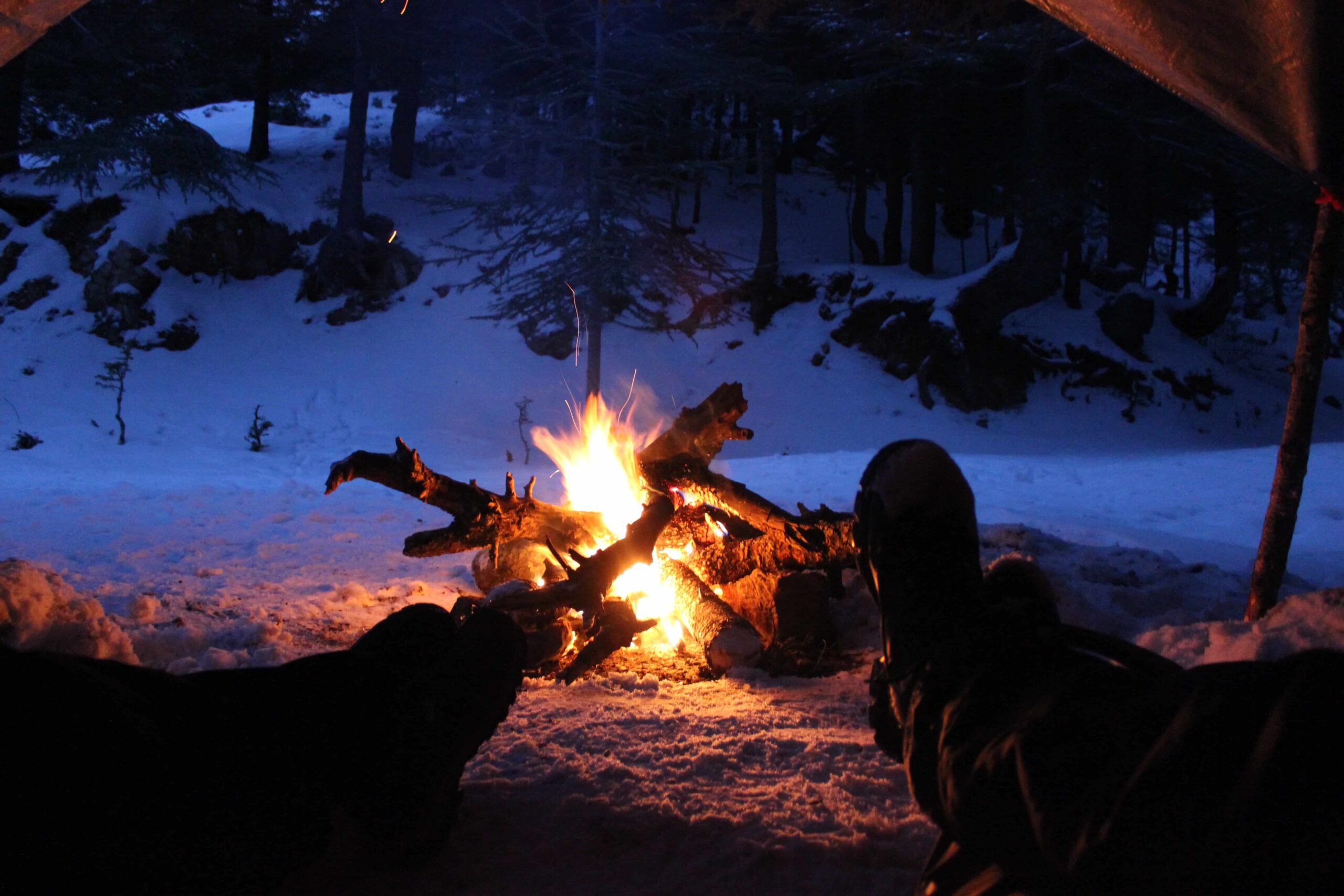
- Choose a sheltered location for your fire and clear away snow before starting.
- Use small, dry twigs and branches to start your fire, and add larger logs once it’s established. The good idea is to bring some ready-made campfire starters with you to get the flames going faster.
- Keep a supply of firewood under a tarp or inside your tent to keep it dry.
Cooking in cold weather

- Opt for simple, one-pot meals that require minimal preparation and cleanup.
- Keep your stove and fuel insulated from the cold to improve performance.
- Cook near your tent entrance to minimize heat loss while still maintaining proper ventilation.
Find delicious meal ideas for every taste and preference:
- Campfire breakfast
- Campfire lunch recipes
- Vegetarian camping food
- Camping desserts
- Pie iron camping recipes
Managing condensation and moisture
- Ventilate your tent by opening the vents or partially unzipping the door.
- Use a small camp towel to wipe away moisture buildup inside the tent.
- Store wet gear outside your sleeping area to minimize moisture inside the tent.
Winter camping safety and first aid
- Be aware of the signs of frostbite and hypothermia, and take immediate action if you suspect either condition.
- Stay hydrated and maintain your energy levels by consuming plenty of water and calorie-rich foods.
- Keep a fully charged phone or communication device on hand in case of emergency.
- If you start to feel cold at night, don’t hesitate to layer up or switch to a colder-rated cold-weather sleeping bag to ensure your safety and comfort.
Unique winter activities to enjoy while camping
Make the most of your winter camping adventure by participating in these fun and unique winter activities that can only be enjoyed in the colder months.
Snowshoeing and cross-country skiing
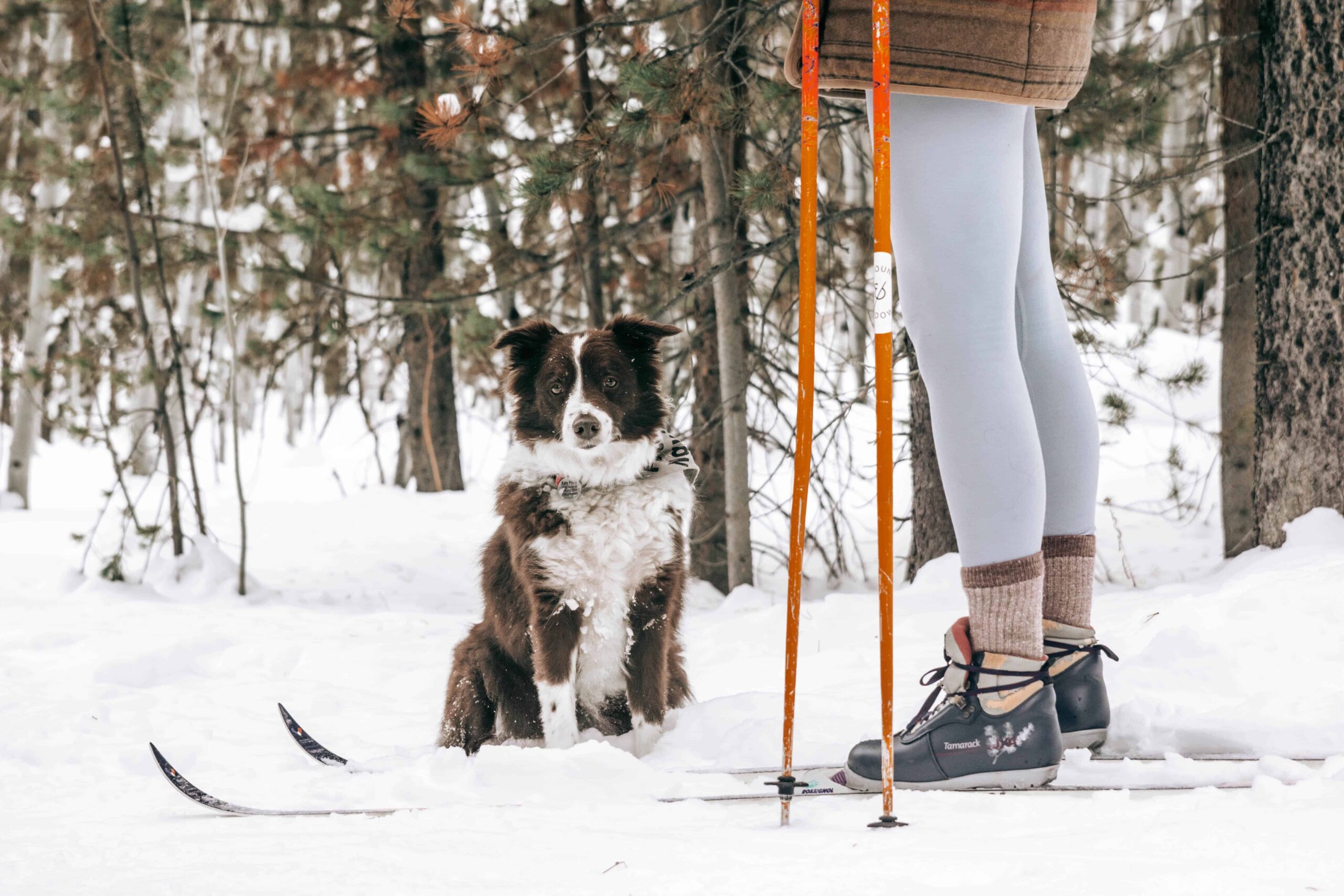
Explore the snow-covered landscape by strapping on a pair of snowshoes or cross-country skis. These activities are great for sightseeing and provide an excellent workout and a fun way to navigate snowy terrain.
Ice fishing

If you’re camping near a frozen lake or river, try your hand at ice fishing. Be sure to follow safety guidelines, such as checking ice thickness and bringing appropriate equipment, like an ice auger, fishing rod, and bait.
Snow fort building and snowball fights
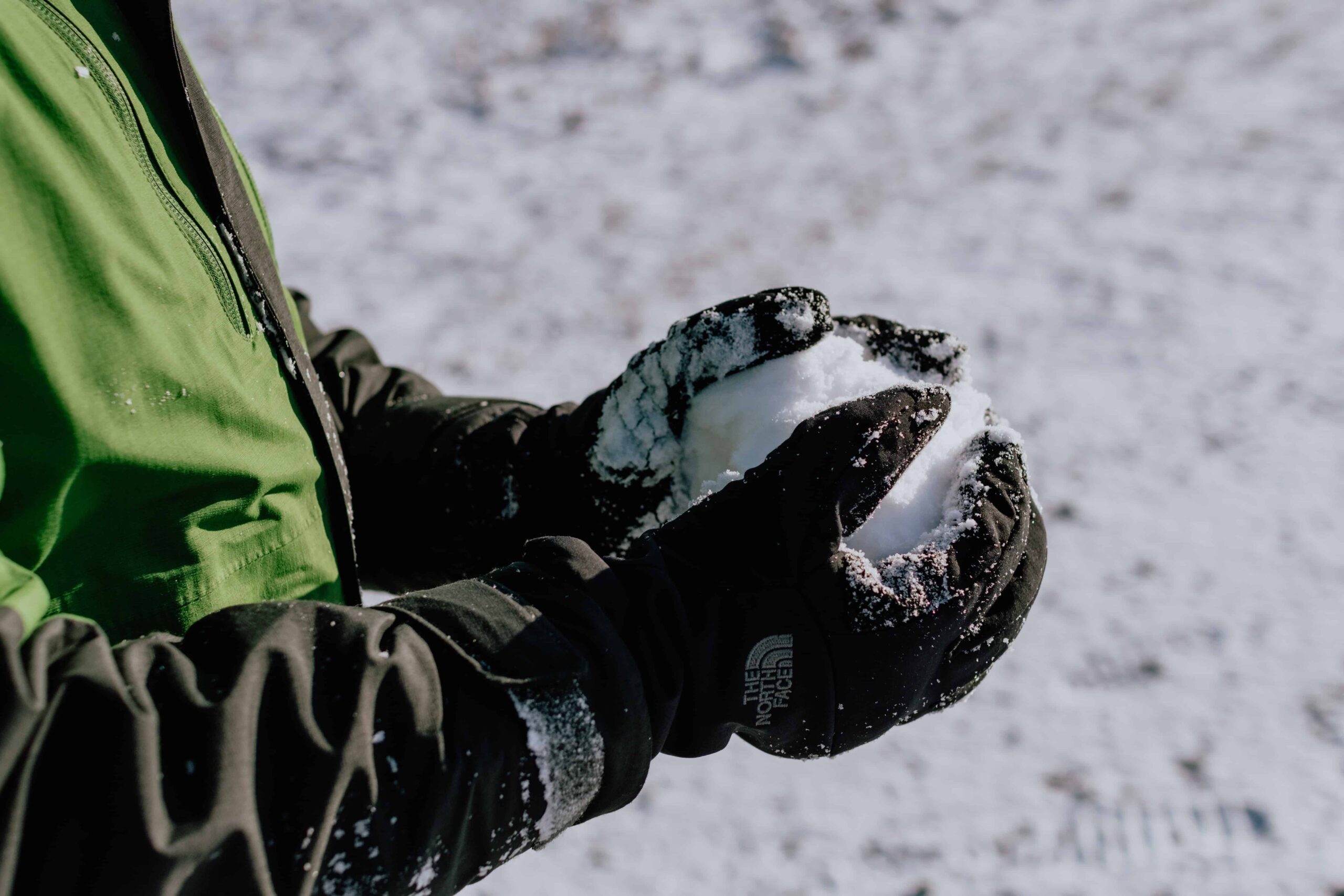
Embrace your inner child by building a snow fort or having a friendly snowball fight. This is a great way to have fun and stay active while camping in the winter.
Winter photography

Capture the stunning beauty of the winter landscape with your camera. Snow-covered trees, frozen waterfalls, and crisp blue skies provide the perfect backdrop for breathtaking photos.
Stargazing and aurora watching
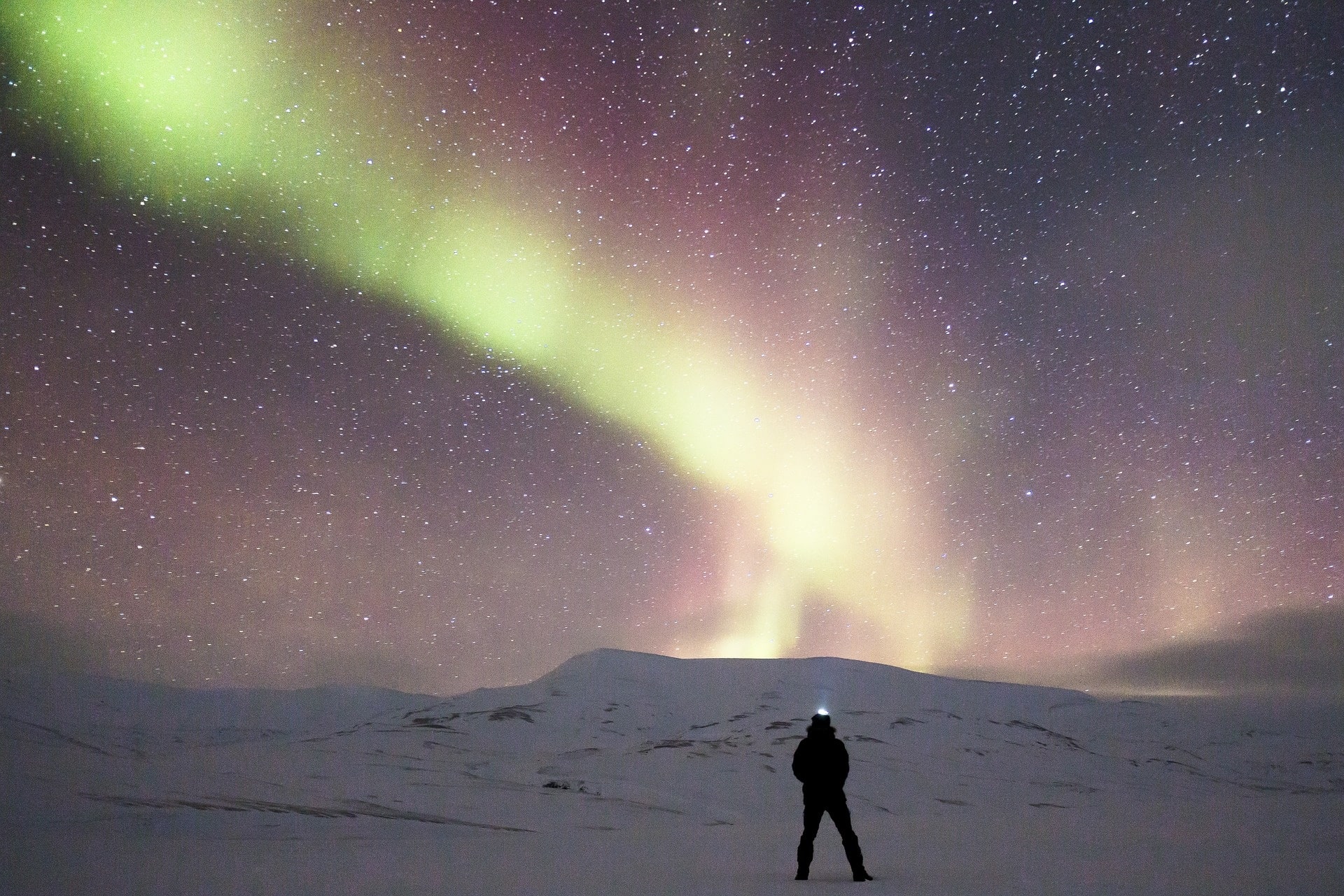
Winter nights often bring clear, dark skies ideal for stargazing. Bundle up and spend some time observing the stars and constellations. If you’re lucky and camping in a high-latitude location, you might even catch a glimpse of the mesmerizing Northern or Southern Lights.
Bottom line
Winter camping is a unique and rewarding experience that offers countless opportunities for adventure and connection with nature.
With proper planning, preparation, and the right gear, you can embrace the beauty of winter and create unforgettable memories in the great outdoors.
So, don’t let the cold weather keep you inside—bundle up, pack your gear, and embark on a winter camping trip you’ll cherish for years. With these tips and insights, you’ll be well-equipped for unforgettable winter camping trips that provide a unique connection to nature.